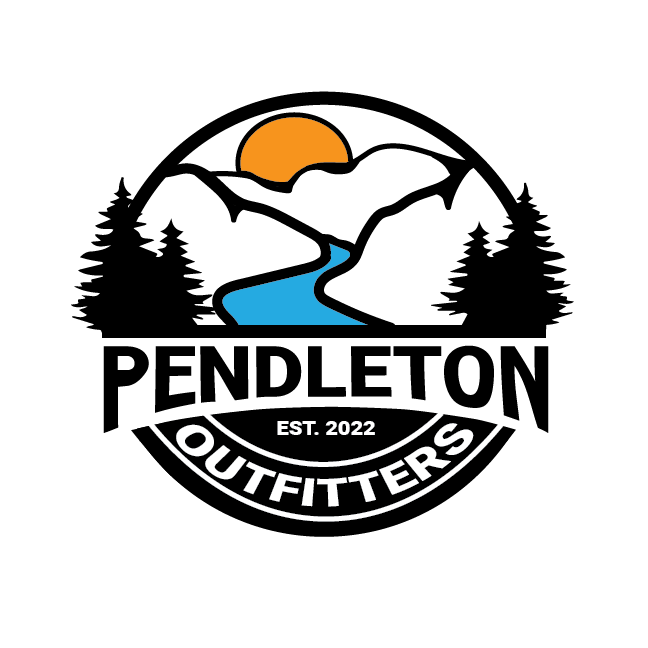Clean Drinking Water in the Backcountry
Water - the key ingredient
In terms of hiking (and basic human survival), water ranks at the top of the priority list. However, in day-to-day life we generally don't carry more than a water bottle with us at any given time. Why? Because potable water is always nearby and easily accessible. How does this compare in the backcountry? We'll discuss common options for water treatment and filtration and reveal our favorite method.
"Filtered" and "treated" water refer to different methods, with the same goal of taking fresh water from a stream, lake, etc. and processing it to become safe drinking water.
Why pack water treatment?
I always recommend carrying at least 1, ideally 2 water treatment options on ANY trip into the backcountry. Here's why:
-Less water to carry - Although it's very important, it's also very heavy. Having treatment options on hand means you don't have to leave with days of water weighing you down. I rarely carry more than 2-3 liters at a time.
-Safety/Survival - If something goes unplanned during the trip, extra water will quickly become the most valuable resource. Taking clean water off the list of concerns is a major comfort. I'll reiterate here that having 2 options is important, so that one piece of equipment failing does not derail the adventure.
It's fun to drink wild water - The immersion with nature is often what folks are looking for with a backcountry trip. There's something satisfying about drinking wild water from a mountain stream, just do it safely.
Cut to the chase, what's your favorite method?
We'll jump right into our favorite (and arguably the most popular) option, then discuss other common methods.
Our favorite is the water filtration method. Specifically, Katadyn's "BeFree Water Filtration System." A proven brand in the industry, Katadyn offers a compact, fast and effective solution to the clean water game. Simply fill the container, the water is filtered as it passes through the spout system. Users can drink from the spout on the go, or easily squeeze filtered water into another container. Here's what we offer, and a quick comment on the best uses for each:
Katadyn BeFree, 1L - Best used for hiking and backpacking, due to its size and versatility. Carry 1 liter of water around, or easily fill up water bladders, other water bottles, etc. When it's empty, you won't even know you're packing it.
Katadyn BeFree 3L - Best used for camping, and group adventures. The only difference here is the container size, trading a small bottle for a larger pouch with a higher capacity. Again, squeeze clean water into other containers, or hang the pouch from a tree at camp, and fill up as needed.
Katadyn BeFree Gravity 10L - The workhorse of water filtration. Added features such as a carrying strap, a water level indicator, and a quick release valve with on/off switch. Great for groups and lengthy trips into the backcountry.
The filtration technology on each of these products is the same. Easy to clean, and long lasting, the 10L boasts up to 1,000L of water filtration before needing to be replaced. Cleaning and maintenance are a breeze as well.
Other Common Options
Boiling - A simple and surefire solution. Bringing water to a rolling boil for 1 minute is considered a safe and effective method of water treatment. The Jetboil Flash is a solid option for boiling water, and our favorite for cooking systems. Drawbacks are minimal, but here's a couple things to consider:
Lack of speed and convenience - Setting up the cookstove, boiling water, and waiting for it to cool off can be annoying if you're on the go. I recall putting freshly boiled water in my bottle, hitting the trail, and not even drinking it because it stayed hot for hours.
Fuel usage - For lengthy trips, it may be problematic to consume fuel every time water is needed. 100g of fuel for a Jetboil is good for 24 boils. If I can limit that to necessary use for food and cooking, the fuel canister will last much longer.
Water Purification Tablets - The title is self-explanatory. Drop a tablet into your container, wait, and enjoy purified water. I've often carried a small container as a backup and haven't had to rely on them yet. I can't speak to any chemical tastes or flavors, but it's on my mind when I think of this option. For the squeamish, remember this method will not remove or screen any chunks of material that are collected in the drinking water container.
UV Light - I've tried and enjoyed this method for water treatment. Users will turn on a wand-like UV light and swirl it in their water container for a minute or two. Again, chunks of material will not be removed from the water, but it's a quick and easy way to treat water. Be sure to pack extra batteries if using this device.
Other filters - There are a variety of other reputable brands that use filtration processes. Pump styles are great, the only issue I've encountered is frozen parts when in extreme cold temperatures. Other inexpensive filters have pouch containers that are susceptible to ripping, or difficulty filling the pouch completely. Each method will have its pros and cons, and that's often influenced by what adventures the tools will most often be used for.
Go Forth and be Prepared!
We hope you found this information useful. Before you hit the trail, don't forget:
Always carry 1, preferably 2 forms of water treatment into the backcountry.
Test and trust the water treatment being relied upon before you go.

